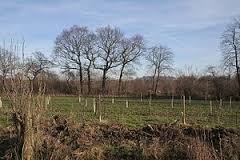Source: uzelacind.com
Published: June 7, 2016

Over the last several decades, the ongoing destruction of the Amazon rain forest has had a major impact on the world. As trees in the rain forest are cut or burned down to create more grassland for cows or for human development, the entire globe suffers the ill effects of increased carbon emissions, air pollution, and environmental destruction.
With so much anxiety about the destruction of the Amazon and other rain forests, some people worry that the biomass industry-which utilizes wood and wood pellets-contributes to deforestation.
Actually, the exact opposite is true. The biomass industry might represent one possible solution to the worldwide deforestation epidemic.
In our blog below, we’ll talk about how the biomass industry contributes to reforestation and afforestation efforts and then discuss the other benefits biomass can provide to the economy and environment alike.
What Are Deforestation, Reforestation, and Afforestation?
31 percent of the world’s surface is covered in trees. We depend on these trees to produce oxygen, and numerous species depend on forests to create life-sustaining habitats. Unfortunately, the last several centuries of global industrialization have reduced forests by an immense percentage.
According to the World Wildlife Fund, the world loses the equivalent of 48 football fields-worth of trees every minute. This large amount of deforestation has dire consequences for everyone in the world-not only because deforestation reduces our oxygen supply, but also because it contributes to 15% or more of the world’s total greenhouse gas emissions.
Deforestation also leads to phenomena like desertification. In dry areas like the Sahel region of Africa, or the sub-Saharan part of Africa that brushes up against the Sahara Desert, deforestation allows the desert to spread south, rendering fertile land inhabitable and displacing populations. Regional conflicts like the Darfur crisis can be directly traced back to the lack of resources that deforestation and desertification
cause.
In order to offset deforestation, numerous organizations, governments, and individuals have worked hard to make reforestation a reality. Reforestation means replanting trees in deforested areas. For instance, Professor Wangari Maathai created an organization known as the Green Belt Movement, which has so far planted 51 million trees in deforested regions of Kenya.
In America, many logging companies commit to reforestation programs. Simply drive through a rural region of Washington, and you’ll notice signs along forested roads that describe a given logging company’s commitment to reforesting the areas they’ve harvested.
Along with reforestation, many companies, organizations, and individuals contribute to afforestation, which means planting trees in areas that previously lacked them. Afforestation improves air quality, strengthens an area’s biodiversity, and improves the soil.
Afforestation efforts have been a crucial part of the American consciousness ever since the Dust Bowl and the Great Depression. As part of his New Deal, President Roosevelt created jobs by having workers plant 18,000 miles-worth of trees as windbreaks to prevent soil erosion.
What Does This Have to Do With Biomass?
Reforestation and afforestation go a long way towards improving the world’s current environmental problems-but how does the biomass industry contribute to these important causes?
While the term “biomass” refers to multiple types of organic energy sources, including industrial waste, food waste, agricultural residue, and certain types of crops, it frequently refers to wood. You might think that using wood as fuel destroys forests-and in some cases, it does, especially when impoverished people are forced to scavenge for fuel sources from nearby trees.
But having a well-regulated, environmentally conscious biomass industry requires a sustainable source of wood-otherwise, the industry would quickly fizzle out. Therefore, the biomass industry often contributes to reforestation and afforestation efforts; this way, they have a sustainable source of fuel that doesn’t cause environmental damage.
Currently, most wood pellets come from forests in southern states like Georgia and North Carolina. Farmers and logging companies that supply biomass companies with wood have to work hard to sustain their forests and replant trees that can serve as future sources of fuel. Unlike fossil fuels, biomass sources like wood are renewable, sustainable, and carbon neutral.
Plus, innovators within the biomass industry are currently working on even more ways to preserve trees and reduce waste. For instance, thanks to a grant from the US Department of Energy, one group is working to find a way to convert forest residue into usable fuel.
Forest residue refers to the tree limbs, trunks, and low-quality wood left behind by logging companies, and they often go to waste. Once researchers figure out the logistics of converting forest residue to fuel, the biomass industry can help reduce even more waste and provide the world with an alternative source of fuel that doesn’t require cutting down more trees.
How Else Can the Biomass Industry Help the World?
Planting trees, reducing waste, and producing renewable fuel sources don’t just help the environment-they also create jobs. Since the world only contains a limited amount of fossil fuels, fossil fuel-related jobs will eventually start to dwindle. But since biomass refers to renewable energy sources, its industry opportunities for employment can only grow.
This article no longer exists at the Source link above. It can be found in the Matteroftrust.org Resource Library.
